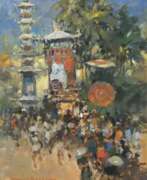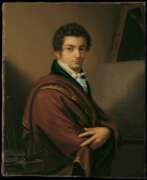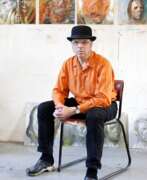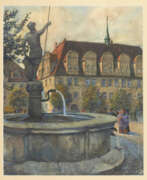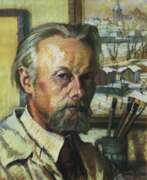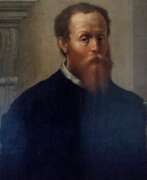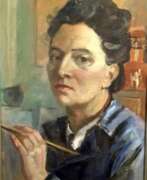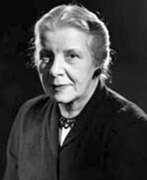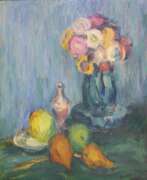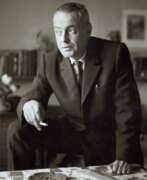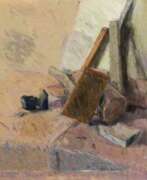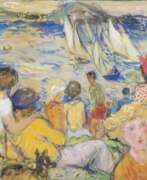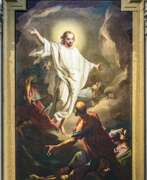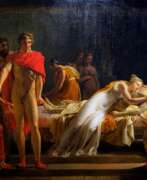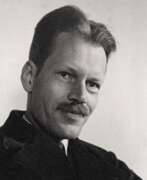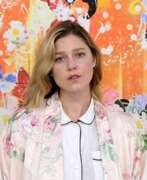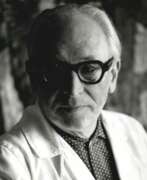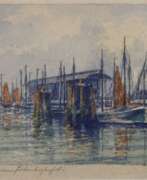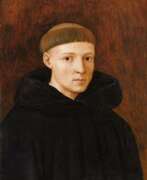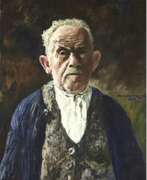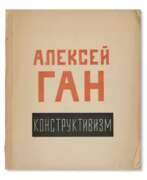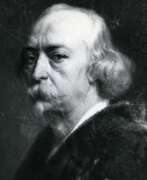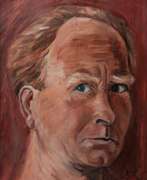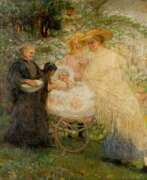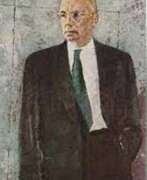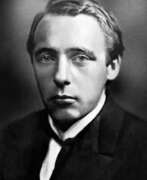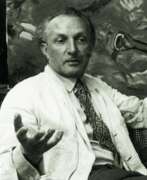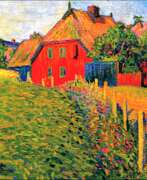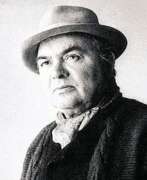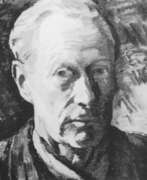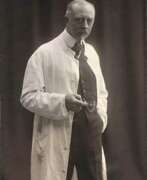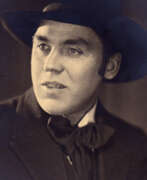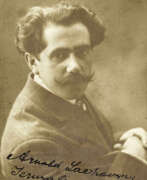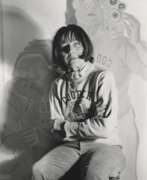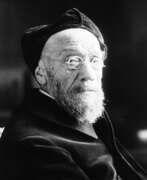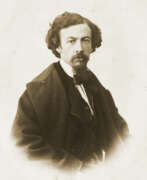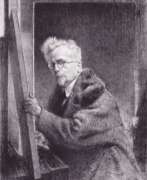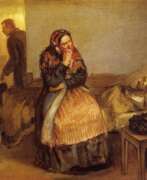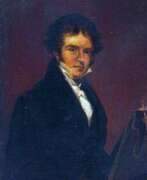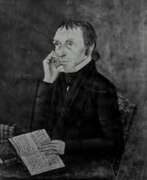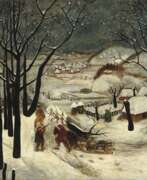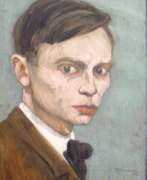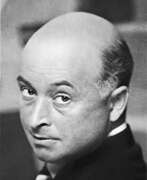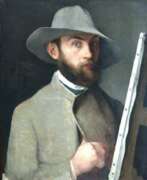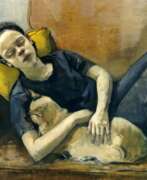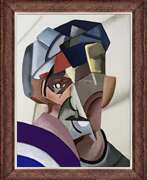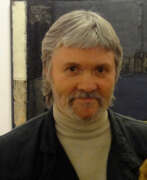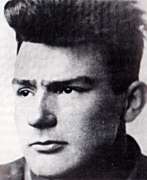Graphic artists Self-portrait


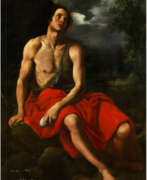

Cristofano Allori was an Italian painter of the late Florentine Mannerist school, painting mostly portraits and religious subjects. Allori received his first lessons in painting from his father, Alessandro Allori, but becoming dissatisfied with the hard anatomical drawing and cold coloring of the latter, he entered the studio of Gregorio Pagani. When still young he became a court portraitist for the Medicis, though many of his commissions were replicas of portraits by his predecessor Bronzino, or had participation by others.[citation needed. His pictures are distinguished by their close adherence to nature and the delicacy and technical perfection of their execution. His most famous work, in his own day and now, is Judith with the Head of Holofernes.
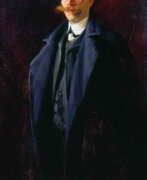

Vasiliy Vasiliyevich Belyashin (Russian: Василий Васильевич Беляшин) was a distinguished Russian and Soviet artist, acclaimed for his contributions to the Silver Age of Russian art. Born on September 8, 1874, in Vilnius, within the Russian Empire, and passing on May 8, 1929, in St. Petersburg, USSR, Belyashin's career spanned the late 19th and early 20th centuries, a period marked by significant artistic evolution. His versatility as an artist is evident in his work as a portrait painter, landscape artist, printmaker, and illustrator, with a particular renown for his series of self-portraits.
Operating mainly within the impressionist style, Belyashin's artistry was not confined to a single genre. He excelled across various forms, including landscape painting, portraits, self-portraits, and still life, showcasing a broad skill set that resonated with the Symbolist and Impressionist movements of his time. His educational background and associations with artistic societies, such as the Kuindzhi Society, the Art Community, and the Partnership of Artists, further underline his integral role in the artistic community of his era.
Though detailed records of Belyashin's works in specific museums or galleries were not immediately available, the acknowledgment of his art in auctions and the recognition by cultural institutions suggest a lasting legacy. His work, celebrated for its emotional depth and technical proficiency, continues to capture the imagination of art collectors and enthusiasts alike.
For those intrigued by Vasiliy Vasiliyevich Belyashin's unique contribution to the world of art, staying updated on auctions and exhibitions featuring his work is invaluable. Signing up for updates related to Belyashin can ensure you remain informed about new sales and auction events, offering a chance to connect more deeply with this master's artistic journey.
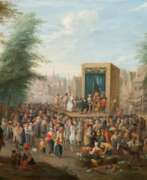

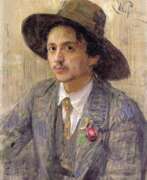

Isaak Israelievich Brodsky (Russian: Исаак Израилевич Бродский), a distinguished Russian artist, was renowned for his contributions to painting and teaching. Born in Sofievka, Russian Empire, Brodsky's artistic journey led him to become a pivotal figure in the Soviet art scene, primarily recognized for his realistic portraits and social realist works. His dedication to capturing the essence of his subjects, combined with a unique sensitivity to color and form, allowed his art to transcend mere representation, offering insights into the culture and political climate of his time.
Throughout his career, Brodsky was closely associated with significant cultural and political developments in Soviet Russia, becoming an official artist of the Soviet regime. His works, such as the iconic portraits of Lenin and other political figures, not only exemplify his skill but also serve as historical documents, offering a glimpse into the era's social fabric. His commitment to realism and the portrayal of Soviet ideals earned him a prominent place in the art world, influencing generations of artists through his role as a teacher and mentor at the Repin Institute of Arts.
Brodsky's legacy is preserved in numerous museums and galleries, with his masterpieces forming an integral part of Russia's cultural heritage. His ability to intertwine art with historical narrative has made his work a subject of study for art collectors and experts alike. For those intrigued by the depth and historical significance of Soviet art, Brodsky's oeuvre offers a fascinating exploration into the power of visual storytelling.
For collectors and experts keen on delving deeper into the rich tapestry of Russian art, staying informed about Isaac Israelievich Brodsky's work is essential. Signing up for updates ensures exclusive access to news on product sales and auction events dedicated to Brodsky's art, providing a unique opportunity to engage with the history and culture he so vividly depicted. Join us in celebrating the legacy of a true maestro of painting, whose works continue to inspire and captivate audiences worldwide.


Arthur Brusenbauch was an Austrian painter. Arthur Brusenbauch learned from Johann Kautsky and then worked as a stage decorator himself. He studied in Vienna at the Staatsgewerbeschule and the Academy of Fine Arts, interrupted by military service and imprisonment. In 1920 he became a member of the Vienna Secession, and in 1939 he moved to the Künstlerhaus. In 1928 he had represented Austria in the art competitions of the 1928 Olympic Games. From 1937 to 1941 he participated in all major German art exhibitions in Munich with seven oil paintings. There, in 1939, Hitler acquired the picture of Melk an der Donau in festive decorations. Brusenbauch, who is attributed to late impressionism, dealt with fresco painting and graphics.
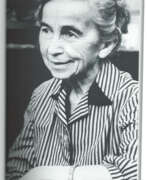

Varvara Dmitrievna Bubnova (Russian: Варвара Дмитриевна Бубнова) was a distinguished Russian painter, graphic artist, and pedagogue, celebrated for her mastery in lithography. Born into a noble family in St. Petersburg, she was deeply immersed in an atmosphere of poetry and music from an early age, which significantly influenced her artistic and intellectual development. Bubnova's education spanned from the Drawing School of the Society for the Encouragement of Arts to the St. Petersburg Academy of Arts, where she was an active member of the avant-garde group "Union of Youth" alongside prominent figures like Mayakovsky, Malevich, and Goncharova.
Her journey took a dramatic turn in 1923 when she moved to Japan, marking the beginning of a transformative period where she not only embraced Japanese art forms like suibokuga and Sumi-E ink drawing techniques but also significantly contributed to Japanese cultural life through her work and teachings. Her unique approach to art and education left a lasting impact on Japanese arts and culture. Among her notable works inspired by her experiences in Japan are "Young Violinist" (1942) and "Village Street. Japan" (1953), showcasing her fascination with Japanese life and aesthetics.
The later years of her life were spent in Sukhum, Abkhazia, where she continued to create vibrant and expressive works, demonstrating a remarkable adaptability and evolution of her artistic style throughout her life. Her works from this period, such as "Behind the Green Door" (1972), highlight her ongoing exploration of color and form. Bubnova's legacy extends beyond her artworks, as she played a crucial role in promoting Russian literature in Japan, contributing to a deeper understanding and appreciation of Russian culture among Japanese audiences.
Bubnova's artworks are part of major collections domestically and internationally, showcasing her diverse talent across various mediums and subjects. Her influence on both Russian and Japanese art scenes underscores her position as a bridge between cultures, celebrated for her artistic innovations and cross-cultural contributions.
For collectors and experts in art and antiques, Varvara Dmitrievna Bubnova's works represent a unique fusion of Russian avant-garde principles with Japanese artistic traditions, making her a fascinating figure whose pieces are a testament to a life spent transcending cultural boundaries. To stay updated on new sales and auction events related to Varvara Dmitrievna Bubnova's works, sign up for updates and immerse yourself in the legacy of this extraordinary artist who effortlessly blended the best of two worlds.
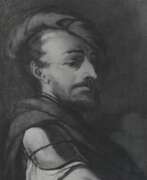

Giulio Carpioni was an Italian Baroque painter, etcher, and a significant figure in the early Baroque period, primarily associated with Venice and Vicenza. His artistic journey began under the mentorship of Alessandro Varotari, known as Il Padovanino. Carpioni's work was influenced by various artists and styles, including the realism and objectivity characteristic of Saraceni and Jean Leclerc, as well as Lombard painting, which he encountered during a trip to Bergamo.
Giulio Carpioni's oeuvre includes a mix of religious and mythological subjects, demonstrating a penchant for narrative and allegory, often depicted with a distinctive graphic line and a warm tonal palette. Noteworthy works include the Apotheosis of the Dolfin family and the Allegory of the Grimani Family, showcasing his ability to blend mythological themes with a vibrant expression of Baroque aesthetics.
His bacchanal scenes, such as the one described in a detailed analysis on the Museo Nacional Thyssen-Bornemisza's website, exhibit his skill in composition and use of color to create dynamic, engaging scenes. Giulio Carpioni's influence extended through his etchings and collaborative works, contributing significantly to the art culture of his time.
For collectors and art enthusiasts interested in Carpioni's work, staying informed about exhibitions, sales, and auctions is essential. Signing up for updates can provide access to the latest information on Giulio Carpioni's pieces, ensuring you don't miss out on new discoveries or opportunities to add to your collection.
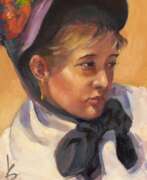

Mary Stevenson Cassatt was an influential American painter and printmaker known for her pivotal role in the Impressionist movement. Born on May 22, 1844, in Allegheny City, Pennsylvania, Cassatt spent much of her adult life in France, where she formed a significant professional relationship with Edgar Degas and exhibited with other Impressionists. Despite her family's initial reluctance, Cassatt pursued art from a young age, attending the Pennsylvania Academy of the Fine Arts at fifteen and later moving to Paris to continue her education under private tutors, including the renowned Jean-Léon Gérôme.
Cassatt's art mainly focused on women and children, encapsulating intimate moments with a profound sense of dignity and depth. Her works, such as "The Boating Party" and "Mother and Child," showcase her skill in portraying the nuanced interactions of everyday life. Cassatt's technique evolved from the light brushstrokes of early Impressionism to a more structured form, emphasizing solid figures and clear contours.
A prominent figure not just in art but also in art advocacy, Cassatt was instrumental in advising American collectors, including the Havemeyers, which helped enrich public and private American art collections significantly. Despite challenges related to her gender and later, her failing eyesight, Cassatt's contributions to art remain influential, reflecting her unique perspective and unyielding dedication to Impressionism.
For updates on exhibitions and sales related to Mary Stevenson Cassatt's works, consider signing up for our newsletter. This subscription will keep you informed about the latest auction events and product sales directly linked to Cassatt's enduring legacy.
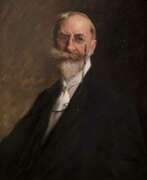

William Merritt Chase was an American painter, celebrated for his role in establishing Impressionism in America and his profound influence as an art educator. Born on November 1, 1849, in Indiana, Chase became a pivotal figure in American art, blending Impressionist and Realist styles with a distinctive flair that captured both cityscapes and intimate studio settings. His mastery of oil, pastel, and watercolor allowed him to create works renowned for their vibrancy and expressiveness.
Chase's career was notably marked by his transformation of studio environments into aesthetic showplaces, making them centers of social gatherings that enhanced his stature in the art community. His tenure at the Shinnecock Hills Summer School and his travels in Europe, especially his interactions with European artists, were crucial in shaping his artistic direction. Notably, his exposure to French Impressionism through exhibitions in New York profoundly influenced his style, integrating lighter palettes and freer brushwork which became evident in his landscapes and portraits.
Chase's works are celebrated for their innovative use of color and composition, qualities that made him a leading figure in American Impressionism. His notable works include scenes of everyday leisure, portraits, and vibrant landscapes, capturing the essence of his era with elegance and sophistication.
If you are intrigued by the artistic journey and impact of William Merritt Chase, consider signing up for updates. This subscription will keep you informed about new sales, upcoming auctions, and events related to his works. Stay connected with the vibrant world of William Merritt Chase and enhance your collection with knowledge and opportunities. Sign up today!
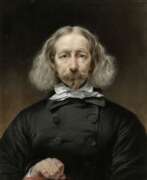

Jean Augustin Daiwaille was a Dutch portrait painter and lithographer. He studied under Adriaan de Lelie. He was director of the Rijksakademie from 1820 to 1826. After that time, he resided at Rotterdam, where he was very successful in painting portraits. He was an early exponent of lithography during the 1820s, overseeing the installation of a lithographic press at the new Koninklijke Academie, and instructing the students on the use of the technique. He established his own lithographic business in 1826, producing reproductions of his own paintings, and collaborating with other artists such as Barend Cornelis Koekkoek to make copies of their work.
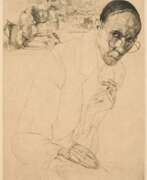

Jules De Bruycker, a Belgian graphic artist and etcher, is renowned for his depictions of Ghent, cathedrals, war scenes, and book illustrations. He achieved technical virtuosity in his prints and was considered one of Belgium's greatest etchers. His work showcased crowds and dramatic lighting, providing an intimate view of daily life in Ghent. De Bruycker's influences ranged from Flemish traditions to artists like Brueghel, Bosch, and Ensor. His later work included prints of cathedrals, figure studies, and sensuous nudes. De Bruycker's art greatly influenced his contemporaries, including Gustave van de Woestijne.


Giuseppe Maria Alberto Giorgio de Chirico, an Italian artist renowned for his profound influence on the Surrealist movement, stands as a seminal figure in 20th-century art. Born in Volos, Greece, in 1888, de Chirico was a visionary painter, sculptor, and writer whose works profoundly altered the landscape of modern art. His paintings, characterized by their dreamlike quality, enigmatic compositions, and the juxtaposition of classical and modern elements, delve into the mysteries of the subconscious, exploring themes of nostalgia, metaphysics, and the uncanny.
De Chirico's art is distinguished by its unique blend of classical motifs with surreal, dreamlike atmospheres, creating a sense of profound mystery and unease. His most famous works, such as "The Enigma of an Autumn Afternoon" and "The Melancholy of Departure," exhibit deserted cityscapes filled with elongated shadows, enigmatic figures, and classical architecture, which became hallmarks of his style. These paintings not only prefigured the Surrealist movement but also influenced countless artists with their exploration of the psyche, the distortion of space, and the play of light and shadow.
His impact on culture and art is undeniable, with his works housed in prestigious museums and galleries worldwide, including the Museum of Modern Art in New York and the Tate Modern in London. De Chirico's ability to evoke the mysterious interconnection between the ancient and the modern through his art continues to captivate collectors and experts in the fields of art and antiques. His innovative approach to painting and sculpture has solidified his position as a key figure in the development of modern art.
For collectors and enthusiasts keen on exploring the depths of 20th-century art and the enigmatic world of Giuseppe Maria Alberto Giorgio de Chirico, staying informed about new discoveries, auction events, and sales of his works is essential. We invite you to sign up for updates to ensure you never miss an opportunity to engage with the enduring legacy of this remarkable Artist. This subscription is your gateway to the latest news related to de Chirico, focusing exclusively on product sales and auction events associated with his influential oeuvre.
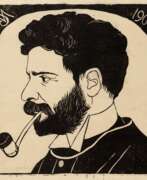

Samuel Jessurun de Mesquita was a Dutch graphic artist, born on June 6, 1868, in Amsterdam, into a Sephardic Jewish family. He became well-known for his contributions to graphic art, especially in the years leading up to the Second World War, and was notable for his mentorship of the famed artist M. C. Escher. De Mesquita's work was characterized by a variety of techniques and mediums, including wood engravings, etchings, lithographs, watercolors, and drawings. His art often featured birds, exotic animals, plants, flowers, and fantastical elements, both humorous and grim, showcasing his deep experimentation and mastery over his craft.
His career took a significant turn around 1915 when he began to gain prominence within Dutch graphic art, partly due to his teaching positions in the field. De Mesquita's penchant for experimentation led him to explore various materials for his prints, such as marble and zinc, and he often processed his prints with other materials, resulting in unique artworks. His subjects ranged from his immediate surroundings, such as his own home or the Artis zoo in Amsterdam, to more experimental and imaginative works that included quasi-human figures and fantastical landscapes.
Unfortunately, de Mesquita's life and career were tragically cut short by the Holocaust. Despite friends urging him to go into hiding, Samuel and his wife believed their Sephardic heritage would protect them. This proved to be a fatal miscalculation, and on January 31, 1944, they were arrested by the Nazis and subsequently died in Auschwitz. Their son Jaap died in Theresienstadt in March of the same year. M.C. Escher, a former pupil and friend, managed to save some of de Mesquita's works after his death, preserving his legacy for future generations.
Samuel Jessurun de Mesquita's body of work is a testament to his skill and creativity, with his pieces held in collections like the Kunstmuseum Den Haag and The Metropolitan Museum of Art. His works range from serene and simple depictions of animals and plants to more complex and imaginative 'Sensitivist' drawings that evoked a unique world from the artist's imagination.
For collectors and experts in art and antiques, de Mesquita's work offers a unique insight into the rich tradition of Dutch graphic arts and the avant-garde experiments of the early 20th century. His influence, particularly on M.C. Escher, highlights his importance in the development of graphic arts. Sign up for updates related to Samuel Jessurun de Mesquita to stay informed about new product sales and auction events showcasing his remarkable works.


Jean-François de Troy was a French Rococo easel and fresco painter, draughtsman and tapestry designer. One of France's leading history painters in his time, he was equally successful with his decorative paintings, genre scenes and portraits. He was the inventor of the tableaux de modes ('paintings of fashions'), which attempted to provide a spirited portrayal of contemporary fashions, pastimes and manners.
He was the Director of the French Academy in Rome from 1738.
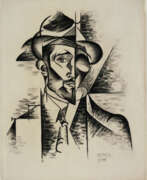

Felix del Marle is a French artist and designer associated with the avant-garde movements of the early 20th century, in particular Orphism and De Stijl. Originally influenced by Cubism, he later adopted the principles of Orphism, a movement founded by Robert Delaunay and characterised by the use of bright colours and geometric shapes to create abstract compositions.
Felix del Marle explored the dynamic interaction of colours and shapes to evoke a sense of rhythm and movement. His works often feature overlapping planes, bold colour contrasts and a sense of optical vibrancy.
Felix del Marle was also a significant influence on the De Stijl movement, which sought to reduce art to its basic geometric elements and colours. He collaborated with Piet Mondrian and Theo van Doesburg.
In addition to painting, del Marle pursued industrial and graphic design, applying his principles to furniture, textiles and typography. He believed in the integration of art into everyday life and the synthesis of artistic disciplines.


Gustave Den Duyts was a Belgian painter, watercolourist, pastelist, etcher and graphic artist, known for his landscapes. His graphic work quickly gained attention. His etchings won him a prize in 1875 in the competition run by the journal "Journal des Beaux-Arts". On the other hand, at the Fifth Exhibition of the Vereniging der Gentsche Kunstoefenaren his painting received criticism because of being too modern. Its indefinite forms forced the viewer to squint in order to make it out and this vagueness of definition is now regarded as a forerunner of Flemish impressionism. Much of his work was townscapes or landscapes with a melancholic feeling, often with a setting sun or a rising moon and typically done in autumn or winter. The landscapes are usually bare, skeletal and stylized, betraying the fact that he was a skilled etcher, but never detailed. Human or animal figures are not sharply defined but appear to dissolve into the background.
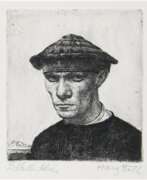

Franz Doll was a German painter, draftsman and graphic artist. Doll specialized in portraiture and landscapes. He created numerous portraits of well-known personalities. Works by the artist are in the Staatliche Graphische Sammlung Munich. From 1938 to 1947 he was a professor at the Düsseldorf Art Academy. In 1928 he was awarded the Art Prize of the City of Munich, in 1930 the Albrecht Dürer Prize of the City of Nuremberg and in 1940 the Goethe Medal. Franz Doll had been a member of the Munich Neue Secession since 1930 and, from 1946, of its successor association, the Neue Gruppe, as well as a founding member of the Association for Original Etchings. Franz Doll was a member of the artist association 7 Munich painters. In 1938 and 1943 he took part in the Great German Art Exhibitions in Munich.


Albrecht Dürer, born on May 21, 1471 in Nuremberg, Germany, is widely regarded as the greatest German Renaissance painter. His contribution to painting and engraving is quite significant and has left a notable mark on the art world. Dürer's early life was spent in Nuremberg, a city that played a crucial role in his development as an artist and was also the site of his death on April 6, 1528. He was the son of the goldsmith Albrecht Dürer the Elder, from whom he initially learned the basics of drawing and metalworking.
Dürer's work is characterized by a combination of Gothic elements with the emerging Renaissance style, which is evident in his woodcuts and engravings. His oeuvre encompasses many themes, including religious works, altarpieces, portraits, and self-portraits. His outstanding prints, such as The Knight, Death and the Devil (1513), St. Jerome in his Study (1514) and Melencolia I (1514), are known for their intricate detail and artistic skill. Dürer was also one of the earliest European landscape painters, as evidenced by his watercolor paintings.
Equally significant are his theoretical writings on mathematics, perspective, and ideal proportions in art. Dürer was not only an artist but also a keen intellectual, his interests encompassing various aspects of culture and science. He served as court painter to Holy Roman Emperors Maximilian I and Charles V, completing several significant art projects for them. Dürer's keen mind and versatile interests brought him into contact with the most prominent figures of his time, including theologians and scientists of the Reformation era.
Dürer's self-portraits are particularly famous, demonstrating not only his artistic skill but also his self-awareness and personal style. These portraits attest to his growing success and confidence as an artist. Dürer's legacy is immense; he influenced not only the art of his time, but also left an indelible mark on the history of European art.
For those interested in the work and legacy of Albrecht Dürer, we recommend subscribing to our updates. Our subscription service is designed to provide information about new sales and auction events related to this remarkable artist. Join us to keep up to date on the latest art and antiques related to Albrecht Dürer.


Otto Eerelman was a Dutch painter; best known for his depictions of dogs and horses. He was also a court painter and did several portraits of Wilhelmina, as Princess and Queen. His best known painting, "De paardenkeuring op de Grote Markt op de 28ste augustus", depicts an annual celebration (featuring horses) held to commemorate the lifting of the Siege of Groningen.
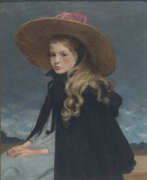

Henri-Jacques-Edouard Evenepoel was a Belgian artist whose most important works are associated with Fauvism. The artist debuted a portrait of his cousin (Louise in Mourning) at the 1894 Salon des Artistes Français. He showed four portraits at the Salon du Champ-de-Mars in 1895 and continued to exhibit there until his death. His first solo exhibition came at the Brussels Cercle Artistique (December 1897 – January 1898). Family and friends were the artist's preferred subjects; his full-length portraits, often against a neutral background, show the influence of Édouard Manet and James Abbott McNeill Whistler. His Parisian scenes were influenced by Henri de Toulouse-Lautrec and Jean-Louis Forain. Though his early scenes had a somber palette, his paintings while in Algeria (where he first wintered during his solo exhibition) were very different in style, anticipating the bold colours of Fauvism (e.g., Orange Market, Blidah).


Baldassare Franceschini, called Il Volterrano after his birth place Volterra and, to distinguish him from Ricciarelli, Il Volterrano Giuniore was an Italian late Baroque painter and draughtsman active principally around Florence and Volterra. He was mainly known for his frescoes, altarpieces and easel paintings for churches and palaces in Florence, Volterra and Rome. His subject matter was diverse and included portraits, biblical and mythological scenes, history paintings and allegorical compositions.
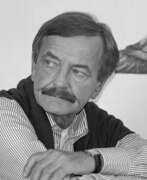

Rolf Gith is a German painter, draughtsman and designer. He studied painting at the University of Fine Arts in Hamburg. He was involved in teaching at various institutions of higher education. Git is a member of the Association of German Artists.
Rolf Git worked in different genres: he was fond of nudes, painted portraits of the people around him as well as numerous self-portraits. Since 1996 colour and light have been central themes in his work.
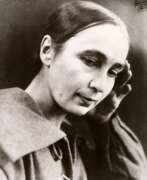

Natalia Sergeevna Goncharova (Russian: Ната́лья Серге́евна Гончаро́ва) was a pivotal Russian avant-garde artist, painter, costume designer, writer, illustrator, and set designer, celebrated for her groundbreaking contributions to several art movements including Rayonism, Futurism, and Cubism. Born in Russia in 1881, Goncharova's artistic journey was marked by her vibrant exploration of Eastern and Western traditions, making her a leading figure in Russian modernism before she relocated to Paris in 1921, where she continued her artistic endeavors until her death in 1962.
Goncharova's work was distinguished by her engagement with the avant-garde, notably through her involvement with movements and groups such as Jack of Diamonds, Donkey's Tail, and Der Blaue Reiter. Her innovative approach blended Primitivism with Russian folk art (luboks), iconography, and modern European styles, making her work highly influential and controversial in its time. For instance, her series "Mystical Images of War" showcased her unique method of merging contemporary events with traditional forms.
Her later years in Paris were characterized by a continued pursuit of innovation, as evidenced by her designs for ballet costumes and sets, further cementing her legacy in the art world. Goncharova's collaborations with notable figures such as her partner Mikhail Larionov and her contributions to the Ballets Russes highlight her versatile talent and enduring influence on both Russian and French avant-garde art scenes.
For collectors and experts in art and antiques, Goncharova's work offers a rich exploration of avant-garde movements and the blending of cultural traditions. Her bold experimentation and pioneering spirit make her pieces highly sought after in the art community.
To stay updated on new discoveries, sales, and auction events related to Natalia Sergeevna Goncharova, sign up for our newsletter. This subscription is your gateway to the latest in the world of avant-garde art, ensuring you're always informed about opportunities to add to your collection.
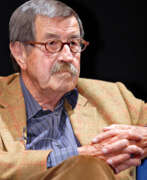

Günter Wilhelm Grass was a German novelist, poet, playwright, illustrator, graphic artist, sculptor, and recipient of the 1999 Nobel Prize in Literature.
Grass is best known for his first novel, The Tin Drum (1959), a key text in European magic realism. It was the first book of his Danzig Trilogy, the other two being Cat and Mouse and Dog Years. His works are frequently considered to have a left-wing political dimension, and Grass was an active supporter of the Social Democratic Party of Germany (SPD). The Tin Drum was adapted as a film of the same name, which won both the 1979 Palme d'Or and the Academy Award for Best Foreign Language Film. In 1999, the Swedish Academy awarded him the Nobel Prize in Literature, praising him as a writer "whose frolicsome black fables portray the forgotten face of history".
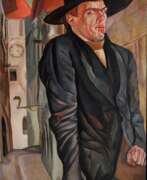

Boris Grigoriev (Russian: Бори́с Дми́триевич Григо́рьев), a Russian artist born in 1886, gained fame for his multifaceted talents as a painter, graphic artist, and writer. His works are celebrated for capturing the essence of rural Russian life and the country's Bohemian artistic circles, including figures like Anna Akhmatova and Velimir Khlebnikov. His series "Russia" (Raseya), created between 1916 and 1918, is particularly noted for its poignant depiction of Russian peasants, earning praise for revealing the true spirit of pre-revolutionary Russia. Grigoriev's international journey took him across Europe and the Americas, where he continued to paint, influenced by the likes of Paul Cézanne. Despite his global travels, Grigoriev's heart remained tied to his Russian roots, which is evident in his works housed in prominent collections such as the Tretyakov Gallery and The Russian Museum.
Grigoriev's life was marked by significant relationships and experiences that influenced his art. His early connection with prominent collector Alexander Korovin and studies at the Académie de la Grande Chaumière in Paris played a crucial role in his development. His art, characterized by expressive portraits and landscapes, spans a wide range of subjects, from notable contemporaries like Sergei Rachmaninoff and Maxim Gorky to the vibrant life and people of Russia. His series "Faces of Russia" and the poignant "Village" from the Raseya series highlight his unique ability to blend personal reflection with social commentary.
Collectors and experts in art and antiques appreciate Grigoriev's work for its depth, diversity, and the way it reflects the turbulent times he lived through. His legacy is a bridge between the Russian tradition and modernist influences, making his works highly sought after in the art world. For those interested in exploring Grigoriev's art further, his paintings are accessible in several museums and galleries worldwide, offering a glimpse into the artist's rich inner world and his perspectives on Russia and beyond.
If you are captivated by the art of Boris Grigoriev and wish to delve deeper into his world, consider signing up for updates on new product sales and auction events related to his work. This subscription is an excellent opportunity for collectors and enthusiasts to stay informed about the availability of Grigoriev's pieces on the market.
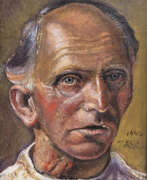

Kurt Günther was a German painter and graphic artist known for his expressionist works.
During the 1920s and 1930s Günther developed a unique style combining elements of Expressionism and Surrealism. His work often featured distorted figures and dreamlike landscapes, and he often used bright colors and bold, graphic forms.
Despite a relatively short career, Günther's work had a significant influence on the development of German modernism. His paintings and prints are held in collections throughout Germany.


Ulrich Hachulla is a German painter and graphic artist, representative of the New Objectivity movement, who lives and works in Leipzig.
He was educated at the Academy of Fine Arts in Leipzig and, in addition to painting, has mastered many graphic techniques.
Hahulla's portraits and self-portraits depict a man in solitude, unsociable, coldly detached - these are numerous types of the respective times. The artist also creates paintings with mythological and allegorical references.


Elsa Haensgen-Dingkuhn is a German artist and graphic artist of the New Objectivity movement.
Elsa Haensgen studied first at the Flensburg Art School, then attended the Hamburg School of Arts and Crafts as the first female student. She married the artist Fritz A. Dingkuhn and soon began participating in numerous solo and group exhibitions, including the Hamburg Secession, with great success. In 1933 Elsa Haensgen-Dingkuhn joined the Hamburg Artists' Association.
Together with her husband, the artist traveled extensively and painted landscapes, genre scenes, portraits and self-portraits, but a special place in her work is occupied by the theme of family and children.
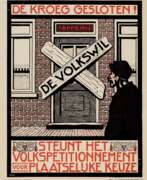

Albert Pieter Hahn was a Dutch political cartoonist, poster artist and book cover designer; well known for his socialist and antimilitaristic viewpoints. Some of his drawings, especially those of the railroad strikes of 1903, have been regularly used in history textbooks. His son-in-law, Albert Hahn jr., was also an artist, so he is sometimes referred to as "Sr.".
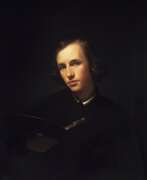

George Henry Hall was an American still-life and landscape artist. He studied art in Düsseldorf and Paris and he worked and lived in New York City, the Catskills of New York and in Europe. His works are in museum collections in the United States and Europe. Over the course of his career he sold 1,659 paintings.
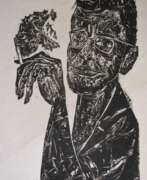

Karl-Heinz Hansen-Bahia, born in 1915 in Hamburg, Germany, was a multi-faceted artist whose work spanned various mediums, including woodblock prints, painting, sculpture, and filmmaking. His artistic journey began in earnest after World War II, with his first woodcut created in 1946. His early work, heavily influenced by the renowned artist Dürer, focused on religious scenes, showcasing his intricate and expressive style.
In 1949, Hansen-Bahia emigrated to Brazil, a move that profoundly influenced his artistic style and career. He taught art in São Paulo and later moved to Salvador Bahia, where his first exhibitions in the country were held. His work during this period began to reflect more of his adopted country's influence than his German origins, leading to a distinctive style that contributed to his prominence as a post-war German artist.
Hansen-Bahia's connection to Germany remained strong despite his move to Brazil. He returned briefly to Germany but later accepted a professorship at the Art Academy in Addis Ababa, Ethiopia. After gaining Brazilian citizenship, he continued to exhibit his work internationally, including in Europe, Japan, and the Americas. His importance in the Brazilian art scene was significant, as he became known for his portrayals of the people and landscape of the state of Bahia.
His artistic legacy was celebrated in extensive retrospectives held in Germany in 1971-72, which were among the last before his death in Brazil in 1976. Hansen-Bahia's work is a testament to his versatility and ability to adapt and evolve his style in response to his changing environments and experiences.
To stay informed about Karl-Heinz Hansen-Bahia, collectors, auctioneers, and art experts are encouraged to sign up for updates. These updates will provide information about new product sales and auction events related to Hansen-Bahia's art.
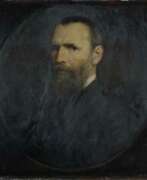

Edmund Harburger was a German artist of the last third of the nineteenth and early twentieth centuries. He is known as a painter, graphic artist, illustrator, and caricaturist.
Harburger became famous for more than 1,500 humorous drawings for the magazine Fliegende Blätter. He also created book illustrations and political cartoons. After living for two years in Venice, the artist practiced there copying the works of the old masters. His exhibitions were held in various European cities, including Paris, Berlin and Munich. His works are kept in museums in various countries, including the New Pinakothek in Munich and museums in Gdansk, Leipzig, Prague and other cities.
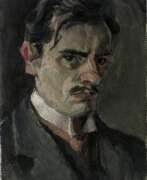

Bernhard Hasler was a German modernist painter. He was known for his expressionist paintings, especially portraits and nudes.
Hasler's work is characterized by the use of bold colours and thick, expressive strokes. He often painted portraits of friends and family. His work is marked by an emotional intensity and an exploration of the human condition.
Hasler's work can be found in many public and private collections, including the National Gallery in Berlin and the Museum of Modern Art in New York. He is considered one of the leading expressionist artists of his generation in Germany.
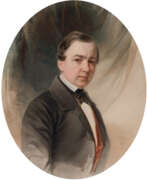

Woldemar Hau (Russian: Владимир Иванович Гау) was a Baltic German portrait painter, renowned for his contributions to the Biedermeier style, a period marked by a sense of realism and simplicity in art. Born in 1816 in Tallinn, then part of the Russian Empire, he was trained under the guidance of his father, Johannes Hau, and the distinguished artist Karl von Kügelgen. Hau's remarkable talent became evident early on when, at just sixteen, he was recommended to paint for the Russian Imperial Court, leading to his appointment as a Court Painter.
During his illustrious career, Hau captured the visages of the Russian nobility, including Tsar Nicholas I and Tsarina Alexandra Fyodorovna, alongside other key figures of his time. His works, often characterized by their intricate detail and vibrant realism, include over 200 miniature portraits of the Izmaylovsky Regiment veterans. His most celebrated works are preserved in prestigious collections and reflect his mastery in both watercolours and miniatures on ivory.
For those interested in exploring the legacy of Woldemar Hau, his paintings are a fascinating window into the cultural and historical nuances of 19th-century aristocratic Russia. To stay updated on exhibitions and auctions featuring Hau's work, I encourage you to sign up for updates. This subscription will keep you informed about new sales and auction events specifically related to Woldemar Hau.
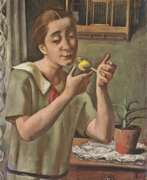

Wilhelm Heise was a German painter associated with the New Objectivity. He earned a living by painting clocks, for which he developed a meticulous technique. In 1925, he participated in the Neue Sachlichkeit (New Objectivity) exhibition in Mannheim which brought together many leading "post-expressionist" artists, including George Grosz, Otto Dix, Max Beckmann, and Georg Scholz. His painted self-portrait entitled Fading Spring is representative of his style. Heise won the Nuremberg Dürer Prize in 1937.
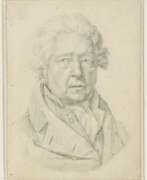

Willem Jacob Herreyns, the Younger, was a Flemish painter of history subjects and portraits. He is regarded as one of the last painters in the tradition of the Flemish Baroque and the last follower of Peter Paul Rubens. Herreyns’ work was very highly regarded in his time. His religious compositions stand in the Rubens tradition. Herreyns is considered a draughtsman with a precise line, but his work shows a certain coldness and lacks originality.
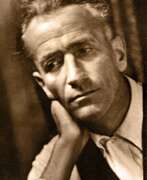

Louis Christian Hess was an Austrian painter and sculptor of the German Neue Sachlichkeit (New Objectivity) during the 1920s. In 1915 Hess exhibited his first works - drawings, tempera and engravings - at the "Turn und Taxishof Galerie" in Innsbruck. After the war, from 1919 to 1924 he attended the Bayerische Akademie der Bildenden Künste in Munich, in the class of Prof. C. Becker-Gundhal. In 1920 Hess attended the first collective exhibition "Ausstellung Junger Münchner - Graphische Kunstwerkstätten" in Munich presented by George Jacob Wolf. In 1928 he became close to Max Beckmann until his exile. Hess participated in the "Sommer Ausstellung des Deutschen Künstler Verbandes AUFBAU - E. V." in Munich and some of his paintings were shown in Berlin. In 1929 he joined the "Juryfreie" movement, becoming its leader until his ban in 1933 by the National Socialist regime. The artistic ostracism practised by Nazism moved Hess to a voluntary exile.


Peter Hirsch is a German painter, graphic artist and draftsman as a child private lessons in painting, apprenticeship as a lithographer, studied at the Munich Academy. He loaded exhibitions in the Munich Glass Palace and in the Kunstverein, ostracized as "degenerate" in Germany 1933-45 partly active in the USA, Canada, the Netherlands, Italy, England, France, Hungary and Switzerland, from 1944 temporarily relocated to the Schliersee, before 1930 -1969 lecturer at the Munich Adult Education Center.
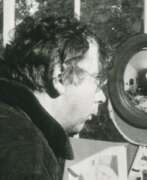

Horst Janssen was a German graphic artist, printmaker, poster and illustrator. He created many drawings, etchings, woodcuts, lithographs, and woodcuts.
There is a museum dedicated to his legacy in Horst Janssen's hometown of Oldenburg. His works are represented internationally in major museums.
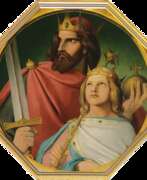

Johann Jakob Jung was a German painter, specializing in religious subjects, and a member of the Nazarene movement. At an early age, he began training as a lithographer with Friedrich Carl Vogel at his "Lithographischer Anstalt" in Frankfurt. In 1834, he took lessons in painting from Philipp Veit at the Städelsches Kunstinstitut, where Veit was Director of the museum's gallery. At this time, Frankfurt had become the focal point for the Nazarene movement, which was devoted to religious art, largely of a Catholic nature. This had a decisive influence on the content of Jung's works. The most familiar of these are oil paintings depicting Louis the Pious, Arnulf of Carinthia and Louis the Child.
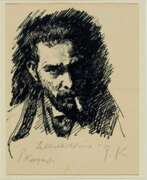

Paul Kayser was a German painter and graphic artist. After training as a painter-decorator, Kayser attended the Schools of Applied Art in Munich and Dresden.
Paul Kayser was a founding member of the Hamburg Artists' Club 1897 and the Hamburg Secession, and a member of the Hamburg Artists' Association and the Altona Artists' Association. His style was decisively influenced by Albert Marquet, whom Kaiser met in 1909.
In 1937, Kaiser's still life was confiscated from the museum in Husum as part of the Nazi "Degenerate Art" campaign.


Vera Vladimirovna Khlebnikova (Russian: Вера Владимировна Хлебникова) was a Russian artist, born in 1891, who specialized in painting and graphic arts. She is celebrated for her vibrant use of color and her distinctive illustrative style, which notably contributed to the visual interpretation of her brother Velimir Khlebnikov's literary works. Her artistic education included studying under Konstantin Yuon and Ivan Dudin in Moscow, and later at the Drawing School in St. Petersburg under Yakov Zielinski. Khlebnikova's early years were marked by her involvement in various exhibitions and her participation in the artistic community of Astrakhan, where she also engaged in political education and teaching.
Khlebnikova's repertoire spanned landscapes, still lifes, and voluminous graphic works. Her pieces, such as the vivid illustrations for her brother's drama "Sysini" and poems like "Vila and the Goblin" and "Wild Melancholy", showcase her exceptional "gift of color" and narrative depth. Despite her critical role in early 20th-century Russian art, detailed information about her works and their locations in museums or galleries is scarce. However, her contributions to Russian Impressionism and Modern art have been recognized in auctions, with her works fetching varied prices, reflecting her artistic significance.
For collectors and experts in art and antiques, Vera Vladimirovna Khlebnikova remains a figure of intrigue, representing the intertwining of familial genius and individual artistic exploration. Her legacy is a testament to the vibrant cultural milieu of early 20th-century Russia and its influence on the broader narrative of modern art.
To stay updated on new discoveries, sales, and auction events related to Vera Vladimirovna Khlebnikova's work, signing up for updates is advisable. This ensures that enthusiasts and collectors are always informed about the latest opportunities to engage with her artistry.


Orest Adamovich Kiprensky (Russian: Орест Адамович Кипренский) emerged as a masterful Russian portraitist in the Age of Romanticism. His journey from an illegitimate serf background to a celebrated artist is a testament to his extraordinary talent and determination. Kiprensky's early exposure to art at the St. Petersburg Academy of Arts paved the way for his signature style, marked by emotional depth and technical brilliance.
Orest Kiprensky's works resonate with the spirit of Romanticism, capturing the essence of his subjects with remarkable sensitivity and nuance. His portrait of Alexander Pushkin is among his most famous, celebrated for its vivid portrayal of the poet's character. Kiprensky's life was as dramatic and varied as his art, with significant periods spent in Italy, where he immersed himself in the local culture and art scene, eventually marrying and converting to Roman Catholicism.
His legacy is enshrined in numerous galleries, where his portraits continue to captivate audiences with their expressive intensity and elegance. Orest Kiprensky's ability to capture the soul of his subjects on canvas ensures his enduring status as a pivotal figure in Russian Romantic art.
For those fascinated by Orest Kiprensky's life and work and keen on updates related to his art, including exhibitions and sales, subscribing to relevant updates can provide valuable insights into the world of this distinguished portraitist.
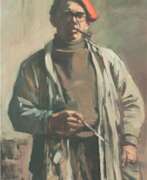

Hermann Kohlmann is a Swiss and German painter, sculptor and graphic artist. He painted landscapes, portraits and figures. Kohlmann studied at the Dresden Academy with Richard Müller and Max Feldbauer. In 1934 he received the Hugo Goepfert Prize. In 1937 he became known to the general public through an exhibition at the Dresden Art Salon Emil Richter. He also exhibited at the Great German Art Exhibitions in 1937 and 1938. After serving in the army and being in captivity, he again worked in Dresden. Many of his works show the reconstruction of the city. Kohlmann was a member of the Association of Visual Artists of the GDR. From 1970 to 1980 he worked as a restorer at the Museum of the History of the City of Dresden.
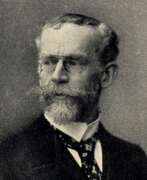

Karl Köpping was a German painter and engraver. He also designed objects of art made of twisted glass.
He mainly created etchings after the well-known works of the past centuries, especially by Rembrandt, but also Hals, Gainsborough or Munkácsy. He also designed Art Nouveau art objects made of coiled glass.
He was awarded the Order of the Legion of Honour and the First Class Medal of the Munich Art Exhibition, as well as the Grand Prix of the Paris World's Fair in 1889.
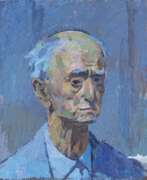

Bernhard Kretzschmar was a German painter and graphic artist.
Kretzschmar studied at the Dresden Academy, in 1920 destroyed most of his work and began his career anew. In 1932 he co-founded the Dresden Secession, but later the Social Democrats banned him as a degenerate artist, and his paintings were removed from museums and galleries. Kretzschmar hated the Nazis and had to flee the country.
Like many artists of his generation, he dabbled in Expressionism, then switched to Verismo. He skillfully tried his hand at both Futurism and Impressionism. He painted on the themes of social poverty, as well as comically depicting the bourgeois way of life. In 1945, most of his works were destroyed in an air raid.
After World War II, social motifs receded into the background and Kretzschmar focused more on landscapes, more often in the suburban areas of Dresden. He also painted several self-portraits with somber, skeptical and ironic facial expressions during his lifetime, which provide a vivid characterization of the artist.
From 1946, Bernhard Kretzschmar worked as a professor at the University of Fine Arts in Dresden. In 1959 he received the National Prize of the GDR, and since 1969 he has been a corresponding member of the German Academy of Arts in East Berlin.


Kurt-Hermann Kühn is a German painter and graphic artist. He trained as a decorator and studied from 1946 to 1952 at the Academy of Graphic Arts and Printing in Leipzig and in Berlin at the Academy of Fine and Applied Arts.
Kurt-Hermann Kühn travelled to Syria and Egypt. These journeys are reflected in many of his paintings. In addition to his extensive painting and graphic work, he created many large-format murals, mainly frescoes. His portraits of women and erotic drawings have also attracted much critical attention.
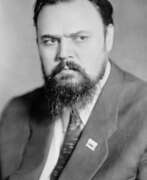

Aleksandr Ivanovich Laktionov (Russian: Александр Иванович Лактионов) was a distinguished Russian artist, celebrated for his intricate approach to painting and his ability to capture the essence of Soviet life through his art. Born in 1910, Laktionov's work spans a crucial period in Russian history, reflecting the cultural and social transformations of his time. He is renowned for his hyperrealistic paintings, which stand as a vivid chronicle of the era's ethos and its people's spirit.
Laktionov's artistry is marked by his meticulous attention to detail, a characteristic that has endeared him to art collectors and experts alike. His paintings are not just visual masterpieces; they are historical documents that offer a window into the daily lives of Soviet citizens, making him a vital figure in the study of Russian culture and art history. Among his most celebrated works is "A Letter from the Front," housed in the Tretyakov Gallery, Moscow. This painting is emblematic of Laktionov's ability to merge technical precision with deep emotional resonance, capturing the poignant realities of wartime Russia.
For collectors and experts in art and antiques, Laktionov's oeuvre represents an invaluable insight into the Soviet aesthetic and its underlying ideologies. His works are a testament to the enduring power of art to reflect and shape the narrative of its time. As interest in 20th-century Russian art continues to grow, Laktionov's paintings remain highly sought after, not only for their artistic merit but also for their historical significance.
We invite collectors and enthusiasts to sign up for updates related to Alexander Ivanovich Laktionov. Subscribing will keep you informed about new product sales and auction events featuring Laktionov's work. Rest assured, this subscription is focused solely on providing you with the latest opportunities to enhance your collection with pieces from one of Russia's most revered artists.
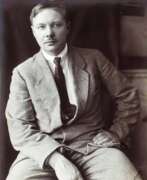

Mikhail Fyodorovich Larionov (Russian: Михаил Фёдорович Ларионов) was a distinguished Russian avant-garde artist, painter, and founder of the Rayonism movement, whose contributions significantly influenced early 20th-century modern art. Born in Tiraspol, then part of the Russian Empire, Larionov's pioneering spirit in both painting and stage design left an indelible mark on the realms of culture and art. His dedication to exploring new artistic techniques and expressions made him a central figure among Russian artists, pushing the boundaries of traditional painting and engaging in innovative artistic dialogues.
Larionov's artistry was not confined to a single genre; he was instrumental in the development of Russian avant-garde art, exploring and contributing to various movements such as Neo-Primitivism before founding Rayonism. This movement, which he developed alongside Natalia Goncharova, his lifelong partner and fellow artist, sought to express the dynamic interplay of light and color, breaking away from the conventional forms and perspectives of the time. Larionov's work in this area highlighted his belief in the power of abstract forms and the potential of art to capture the energy and rhythm of modern life.
His contributions are celebrated in major museums and galleries worldwide, with his works being pivotal in understanding the evolution of modern art. Notable works by Larionov are held in prestigious institutions such as the Russian Museum in St. Petersburg, the Tretyakov Gallery in Moscow, and the Museum of Modern Art in New York, underscoring his international recognition and the lasting impact of his artistic innovations.
For collectors and experts in art and antiques, Mikhail Fyodorovich Larionov's legacy offers a rich field of study and appreciation. His works not only embody the innovative spirit of early 20th-century art but also represent a bridge between Russian cultural heritage and the broader currents of European modernism. To stay informed about new product sales and auction events related to Mikhail Fyodorovich Larionov, we invite you to sign up for updates. This subscription is a valuable resource for enthusiasts keen to explore the depth and diversity of Larionov's contributions to modern art.
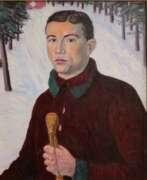

Jean Lehmann was a Swiss painter, graphic artist and sculptor.
Jean graduated from the Lucerne School of Applied Arts, studied at the Academy of Fine Arts in Venice and at the Academy of Fine Arts in Munich. Lehmann worked at the Glacier Gardens in Lucerne and as a guide in mountain hotels, so many of his paintings are mountain snow-covered landscapes. The artist was particularly fond of painting rustic landscapes, rural scenes of quiet life, and he also created portraits and still lifes in a wide variety of techniques. He also painted a series of watercolors and chalk drawings of Swiss traditional costumes.
Lehmann also worked in the advertising business, creating posters for sporting events and travel companies.


Johan Thomas Lundbye was a Danish painter and graphic artist known for his landscapes of his native country and depictions of animals.
He studied at the Royal Danish Academy of Fine Arts and responded to the call to develop national art by depicting Denmark's characteristic landscapes, monuments and historical sites, as well as its inhabitants.
Lundby's views of mounds, cliffs and coastlines were appreciated - he became one of the national Romantic artists of his generation.
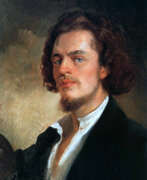

Konstantin Yegorovich Makovsky (Russian: Константин Егорович Маковский) was a renowned Russian painter, celebrated for his romantic and historical paintings that often portrayed an idealized view of Russian life in previous centuries. Born in Moscow in 1839, Makovsky became a pivotal figure in Russian art, distinguishing himself early on at the Moscow School of Painting, Sculpture and Architecture and later at the Imperial Academy of Arts in Saint Petersburg.
Makovsky was a core member of the "Peredvizhniki" or Wanderers, a group advocating for realism and social critique through art. His commitment to depicting the everyday life of old Russia won him accolades, including the Large Gold Medal at the World's Fair in Paris in 1889. Some of his notable works include "The Russian Bride's Attire" and "The Boyar Wedding Feast," which reflect his mastery in capturing the lavish and picturesque aspects of Russian history and culture.
Tragically, Makovsky's life ended in a road accident in Saint Petersburg in 1915, but his legacy lives on through his profound impact on Russian art and culture. His works continue to be highly regarded and are featured in major museums and collections worldwide.
For those interested in exploring Konstantin Makovsky's work further or acquiring pieces related to his artistic legacy, stay updated with our newsletters for announcements on sales and auction events. Sign up to not miss out on the opportunity to own a piece of Russian art history.
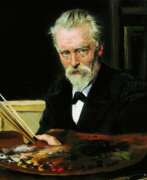

Vladimir Yegorovich Makovsky (Russian: Владимир Егорович Маковский), a distinguished Russian artist born in 1846 in Moscow, was celebrated for his genre paintings that vividly depicted everyday life with a blend of humor and social critique. His father, Yegor Ivanovich Makovsky, co-founded the Moscow School of Painting, Sculpture, and Architecture, where Vladimir later studied and taught, shaping the future of Russian art alongside his artistic family.
Makovsky's work often showcased small-town scenes and common folk, creating narratives that were both endearing and pointedly critical of societal injustices. Noteworthy pieces like "The Grape-juice Seller," "Fruit-Preserving," and "The Congratulator" highlight his skill in capturing the nuances of human expressions and interactions.
Throughout his career, Makovsky remained a pivotal member of the Peredvizhniki (Wanderers), a group dedicated to portraying real-life issues through art. His later works, such as "The Peddler" and "January 9, 1905, on Vasilyev Island," reflect his continued commitment to social themes, depicting historical events with deep empathy for the oppressed.
For art enthusiasts and collectors, Makovsky's works are pivotal in understanding the evolution of Russian realism. His paintings are held in high esteem and are featured in major museums around the world. To stay updated on exhibitions and sales related to Vladimir Yegorovich Makovsky, sign up for our newsletter, focusing exclusively on significant updates from the art world.


Matthias Maris was a Dutch painter, etcher and lithographer. He initially belonged to the Hague School, like his two brothers, Jacob and Willem, but his later works deviated more and more from that school into a unique style influenced by the Pre-Raphaelites. Most of the paintings by M. Maris are in museums and private collections in Great Britain and the USA. A great admirer of the artist's talent was Vincent van Gogh.
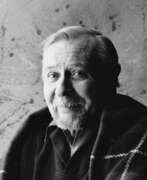

André-Aimé-René Masson was a French artist, celebrated for his profound influence on the world of modern art, particularly in painting and sculpture. Born in 1896, Masson's work is emblematic of the Surrealist movement, although his style evolved across different phases throughout his career. His ability to fuse dream-like imagery with abstract forms set him apart from his contemporaries, making him a pivotal figure in the development of Surrealism and beyond.
Masson's art is characterized by its dynamic forms and the integration of automatic drawing, where the unconscious mind is allowed to express itself without rational oversight. This technique not only foregrounded Surrealism's fascination with the subconscious but also highlighted Masson's unique ability to capture the complexity of human emotion and thought on canvas. His works, such as "The Metamorphosis of the Lovers" and "Battle of Fishes," are not just visual experiences but portals to the intricate layers of the psyche, showcasing his mastery over both form and content.
Notably, André-Aimé-René Masson's contributions extend beyond individual creativity; his works are housed in prestigious museums and galleries worldwide, including the Museum of Modern Art in New York and the Centre Georges Pompidou in Paris. These institutions recognize Masson's art not merely as aesthetic achievements but as cultural landmarks that continue to inspire and provoke. His legacy persists, offering rich insights into the intersections of art, psychology, and philosophy.
For collectors and experts in art and antiques, André-Aimé-René Masson's oeuvre represents a fascinating exploration of the Surrealist movement and its enduring impact on modern and contemporary art. His innovative approach to painting and sculpture invites ongoing discussion and appreciation among enthusiasts and scholars alike. We invite you to sign up for updates on new product sales and auction events related to André-Aimé-René Masson, ensuring you stay informed about opportunities to engage with the remarkable legacy of this pivotal artist. This subscription is your gateway to the forefront of art collection, focusing exclusively on Masson's influential body of work.
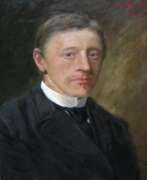

Karl Otto Matthaei was a German painter, draftsman and graphic artist. He completed his training from 1891 to 1900 at the Grand Ducal Academy of Fine Arts in Karlsruhe, which was one of the leading landscape school in Germany. His first teacher was Franz Hein from Altona. His first study trips took him to the Karlsruhe area. Around 1894 he lived in the Grötzinger painters' colony in an artist community. In 1895, art students from Karlsruhe founded an artists' colony in Duhnen, Altenwalde and Altenbruch (Cuxhaven), of which Karl Otto Matthaei was a founding member. Karlsruhe was Matthaei's official place of residence until 1916, although this was regularly interrupted by his annual study and painting visits to the North Sea and the Lower Elbe region. He then moved his residence to Bremen. Matthaei was chairman of the Bremen Artists' Association for many years and was made an honorary member in 1924. In 1930 he was appointed Honorary President of the Association of Northwest German Artists.


Ruvim (Ilya) Mazel was a Russian and Soviet artist, illustrator and teacher. He studied painting under Nikolai Roerich and Alexander Benois.
In the "European" period of his life Mazel was strongly influenced by Munich Art Nouveau, and after moving to Ashgabat, Oriental motifs became the main motifs in the artist's paintings.
